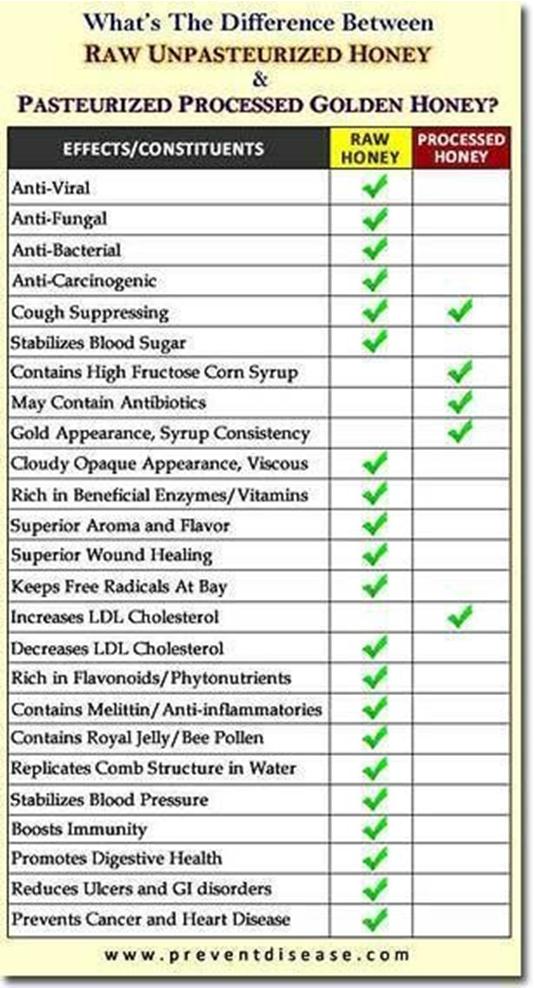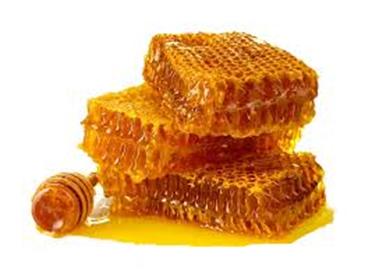
Pure Raw Organic Honey

The Truth about Honey and Sugar: All You need to Know to Make the Right Choices
- Honey versus Sugar: What are the differences? The Distinct Fates of Honey and Sugar in Our Bodies
While honey and sugar may seem like interchangeable sweeteners, their paths through our bodies are remarkably different. Honey is a whole food, comprising a rich tapestry of compounds, including macronutrients, micronutrients, enzymes, probiotics, and prebiotics. In contrast, sucrose is a chemical isolate, stripped from its natural context and consisting of a single compound.
Even the sugars found in honey are not as straightforward as those in sugarcane. Honey’s “sugar” is a complex mixture of glucose, fructose, and at least 25 different oligosaccharides, including sucrose, melezitose, and erlose. This diverse array of sugars is what sets honey apart from refined sugar.
When fructose from honey is isolated and consumed in excess, it can have devastating effects. In large doses, fructose can lead to over 70 adverse health effects, including insulin resistance, fatty liver, obesity, hypertension, and elevated blood sugar. This stark contrast highlights the importance of considering the nuances of honey and sugar, rather than treating them as interchangeable sweeteners.
The Evolutionary Roots of Our Sweet Tooth
Our relationship with honey and sugar is not just about their chemical makeup, but also about the time our bodies have had to adapt to them as a source of energy and nourishment. Honey, the original sweetener, was the primary concentrated sweetener consumed by humans for thousands of years, with evidence of its use dating back to ancient civilizations in Sumeria and Spain over 8,000 years ago.
In contrast, sugar, the newcomer, emerged as a major player in the 19th century with the advent of industrial production. Our bodies, however, have had a vastly longer time to adapt to honey, which has been a part of our diet for hundreds of thousands, if not millions, of years. This disparity in exposure time is crucial from an evolutionary and nutritional perspective.
Interestingly, sugarcane, which is the primary source of refined sugar, belongs to the same grass family as the cereal grains we now consume in abundance. While we have only been eating these grains for 10-20,000 years, our bodies have had an infinitely longer time to adapt to honey. This highlights the importance of considering the long-term effects of our dietary choices on our health and well-being.

Clinical Evidence Supports the Benefits of Honey
For those who remain skeptical about the differences between honey and sugar, clinical research provides conclusive evidence. A 2010 study published in the Journal of the American College of Nutrition found that honey had a blunted glycemic response, reducing glucose intolerance, and positively modulated appetite hormones in healthy women.
In this double-blind, randomized clinical trial, 14 healthy, nonobese women were given either 450 calorie honey or sugar in their breakfasts. The results showed that the honey group:
- Had a delayed postprandial ghrelin response
- Experienced enhanced total peptide YY levels
- Demonstrated a blunted glycemic response, which may be beneficial for reducing glucose intolerance
Another study published in the Journal of Medical Food in 2004 compared honey to dextrose and sucrose in healthy, diabetic, and hyperlipidemic subjects. The results found that natural honey:
- Lowered plasma glucose levels
- Reduced C-reactive protein, a marker of inflammation
- Decreased homocysteine levels, a risk factor for cardiovascular disease
Animal research also confirms the benefits of honey. When compared to sucrose, honey was found to:
- Promote lower weight gain
- Reduce adiposity (fat accumulation)
- Decrease triglycerides
These findings demonstrate that honey has a unique set of properties that make it a more beneficial choice than sugar.

- Unlocking the Power of Raw Honey
Raw honey is nature’s purest food, made by bees from flowers’ nectar, and it’s more than just a natural sweetener. Its medicinal properties make it a valuable ingredient for:
- Antiseptic and antibacterial uses
- Cough remedies
- Chronic wound management
- Therapies for certain infections
Nutritional Powerhouse
Raw honey is a functional food that boasts an impressive array of nutrients:
- 22 amino acids
- 27 minerals, including:
- Iron
- Zinc
- Potassium
- Calcium
- Phosphorous
- Magnesium
- Selenium
- 5,000 enzymes
- Vitamins:
- Vitamin B6
- Thiamin
- Riboflavin
- Pantothenic acid
- Niacin
Antioxidant and Anti-Inflammatory Properties
Raw honey contains nutraceuticals that help neutralize damaging free radical activity, reducing the risk of:
- Some cancers
- Heart disease
- Chronic diseases
Holistic Health Benefits
Raw honey can help with a range of health issues, including:
- Low energy
- Sleep problems
- Seasonal allergies
Its unique combination of nutrients and medicinal properties make raw honey a valuable addition to a healthy diet and lifestyle.
- Benefits of Consuming Raw Honey
Raw honey contains various beneficial compounds, including enzymes and probiotics, which are destroyed when heated or cooked. These compounds contribute to honey’s health benefits, such as:
- Reducing allergy symptoms: Raw honey contains the enzyme diastase, which may help clear immune complexes associated with allergies.
- Supporting gut health: Raw honey is rich in prebiotics and probiotics, which support the healthy flora in our gut.
- Promoting wound healing: The enzyme glucose oxidase in raw honey produces hydrogen peroxide, associated with wound sterilizing and healing properties.
- Additionally, local raw honey may contain small amounts of local pollen, which may help desensitize an overly active immune response to environmental triggers.
Consuming raw honey on a regular basis can provide numerous health benefits, including:
- Weight Management: Replacing sugar with honey can lower blood sugar, reduce serum triglycerides, and prevent weight gain. Raw honey also activates hormones that suppress appetite, making it easier to maintain a healthy weight.
- Natural Energy Source: Raw honey is an easily absorbed source of energy, making it ideal for pre- and post-exercise fuel. Its natural sugars, vitamins, and minerals provide a boost of energy, earning it the nickname “the perfect running fuel.”
- Cough Relief: A single dose of raw honey can reduce mucus secretion and coughs, making it a natural remedy for coughs and throat irritation. Studies have shown that raw honey is just as effective as commercial cough syrups in treating coughs.
- Antioxidant Properties: Raw honey contains polyphenols, powerful antioxidants that can reduce the risk of heart disease and cancer. These antioxidants work to protect the body from oxidative stress and promote overall health and well-being.
- Promoting Sleep: Consuming honey restocks the liver’s glycogen supply, preventing a lack of fuel that can disrupt sleep. Additionally, raw honey promotes the release of melatonin, a hormone that induces sleep and also boosts immunity and tissue repair.
- Antibacterial and Anti-fungal Properties: Raw honey is a natural antibacterial agent that can heal wounds and ulcers. It reacts with the body’s fluids to produce hydrogen peroxide, a powerful anti-bacterial compound. Raw honey is also used to treat burns, ulcers, gingivitis, and acne, making it a popular ingredient in beauty treatments.
- Aiding Diabetes Management: Raw honey has been observed to cause a lower elevation of plasma glucose levels in diabetics compared to dextrose and sucrose. When combined with cinnamon, raw honey becomes a low glycemic index food combination. Raw honey increases insulin and decreases hyperglycemia, making it a useful aid in managing diabetes.
- Countering Pollen Allergies: Raw honey contains bee pollen, which can help ward off infections, provide natural allergy relief, and boost overall immunity.
- Reducing Ulcers and Gastrointestinal Disorders: Honey treatment may help alleviate disorders such as ulcers and bacterial gastroenteritis, likely due to its antibacterial properties.
- Treating Painful Mouth Blisters and Ulcers: Raw honey can help reduce painful mouth blisters among children with herpes simplex gingivostomatitis, allowing them to eat and drink more comfortably.
- Treating Radiation-Induced Mucositis: Honey has been shown to alleviate the adverse effects of radiation-induced mucositis, a common side effect of head and neck cancer radiotherapy.
- Fighting Stomach Infections: When paired with green or black tea, raw honey can help treat stomach conditions such as infections caused by Helicobacter pylori (H. pylori), which can lead to gastritis, peptic ulcer disease, and certain types of stomach cancers.
- Treating Burns and Wounds: Raw honey is effective in treating wounds and burns, particularly when compared to boiled potato peel or anti-infective creams. Studies have shown that honey dressing can heal burns up to 100% within two weeks.
- Therapeutic Effects for Bowel Resection: Oral intake of raw honey has potential therapeutic effects on patients who underwent massive bowel resection, including increasing gross residual bowel length.
- Important Considerations for Raw Honey
To maintain its natural properties and health benefits, raw honey must be:
- Protected from high temperatures: Raw honey should not be heated above 95°F (35°C), the temperature of the beehive. This prevents the destruction of enzymes, vitamins, and minerals.
- Unpasteurized: Pasteurization would eliminate the beneficial bacteria and enzymes found in raw honey.
- Unfiltered: Fine filtering would remove bee pollen, propolis, and other beneficial phytonutrients, reducing the health benefits of raw honey.
- Free from additives and chemicals: Commercial honey may contain additives, chemicals, or antibiotics, which can be detrimental to health.
- Sourced from healthy bees: Raw honey should be sourced from bees that are not treated with antibiotics, ensuring that the honey is free from contaminants.
- How to Identify Raw Honey
- Look for opacity: Organic raw honey tends to be opaque, whereas commercial honey is often clear and syrup-like.
- Avoid light, crystal-clear honey: This type of honey is likely to have been heat-treated, which can destroy its natural properties.
- Choose raw, unfiltered honey: This type of honey is less processed and retains its natural health benefits.
CONCLUSIONS:
Raw honey is far more than just a natural sweetener. Its nutritional properties are impressive: it contains 22 amino acids, 27 minerals and 5,000 enzymes. Minerals
include iron, zinc, potassium, calcium, phosphorous,
magnesium and selenium. Vitamins found in honey include vitamin B6, thiamin, riboflavin, pantothenic acid and niacin.





For more information, tune in to the following YouTube videos:
References
- Abdel-Naby Awad OG et al “Honey can help in herpes simplex gingivostomatitis in children: Prospective randomized double blind placebo controlled clinical trial” Am J Otolaryngol. 2018 Nov – Dec;39(6):759-763. doi: 10.1016/j.amjoto.2018.09.007. Epub 2018 Sep 12.
- Abdel-Naby Awad OG et al “Honey can help in herpes simplex gingivostomatitis in children: Prospective randomized double blind placebo controlled clinical trial” Am J Otolaryngol. 2018 Nov – Dec;39(6):759-763. doi: 10.1016/j.amjoto.2018.09.007. Epub 2018 Sep 12.
- Co JL et al “Effectiveness of honey on radiation-induced oral mucositis, time to mucositis, weight loss, and treatment interruptions among patients with head and neck malignancies: A meta analysis and systematic review of literature” Head Neck. 2016 Jul;38(7):1119-28. doi: 10.1002/hed.24431.
- Samdariya S et al “Randomized Controlled Trial Evaluating the Role of Honey in Reducing Pain Due to Radiation Induced Mucositis in Head and Neck Cancer Patients” Indian J Palliat Care. 2015 Sep-Dec;21(3):268-73 doi: 10.4103/0973-1075.164892.
- Samdariya S et al “Randomized Controlled Trial Evaluating the Role of Honey in Reducing Pain Due to Radiation Induced Mucositis in Head and Neck Cancer Patients” Indian J Palliat Care. 2015 Sep-Dec;21(3):268-73 doi: 10.4103/0973-1075.164892.
- Boyanova L et al “Honey and green/black tea consumption may reduce the risk of Helicobacter pylori infection” Diagn Microbiol Infect Dis. 2015 May;82(1):85-6. doi: 10.1016/j.microbio.2015.03.001. Epub 2015 Mar 6.
- Subrahmanyam M et al “Honey dressing versus boiled potato peel in the treatment of burns: a prospective randomized study” Burns. 1996 Sep;22(6):491-3.
- Maghsoudi H et al “Comparison between topical honey and mafenide acetate in treatment of burn wounds” Ann Burns Fire Disasters. 2011 Sep 30;24(3):132-7.
- Eyarefe OD et al “Small bowel responses to enteral honey and glutamine administration following massive small bowel resection in rabbit” Afr J Med Med Sci. 2008 Dec;37(4):309-14.
Disclaimer
This content is strictly the opinion of its author and is meant for informational and educational purposes only. It is not intended to provide medical advice or to take the place of medical advice , diagnosis or treatment from a personal physician.
Readers of this content are advised to consult their doctors or qualified health professionals regarding specific health questions. Neither the author nor publisher of this content takes responsibility for possible health consequences of any person or persons reading or following the information in this educational content.
All readers of this content, especially those taking prescription or over-the-counter medications, should consult their physicians before beginning any nutrition or supplement or lifestyle programme.
————————————————————————————————————
Commercial honey is heavily processed, and might even be chemically refined and contain additives. It is often liquefied with hot water ,filtered and submitted to excessive heat. High temperatures destroy enzymes, vitamins and even some of the minerals in honey.
Additionally, non-raw honey or regular commercial honey can be sourced from bees that are treated with antibiotics.
Beware of light, crystal-clear honey. The only way to achieve sparkling clear honey is by heat. Organic raw honey tends to be opaque, as opposed to the golden, syrup-like, clear aspect of commercial honey.






